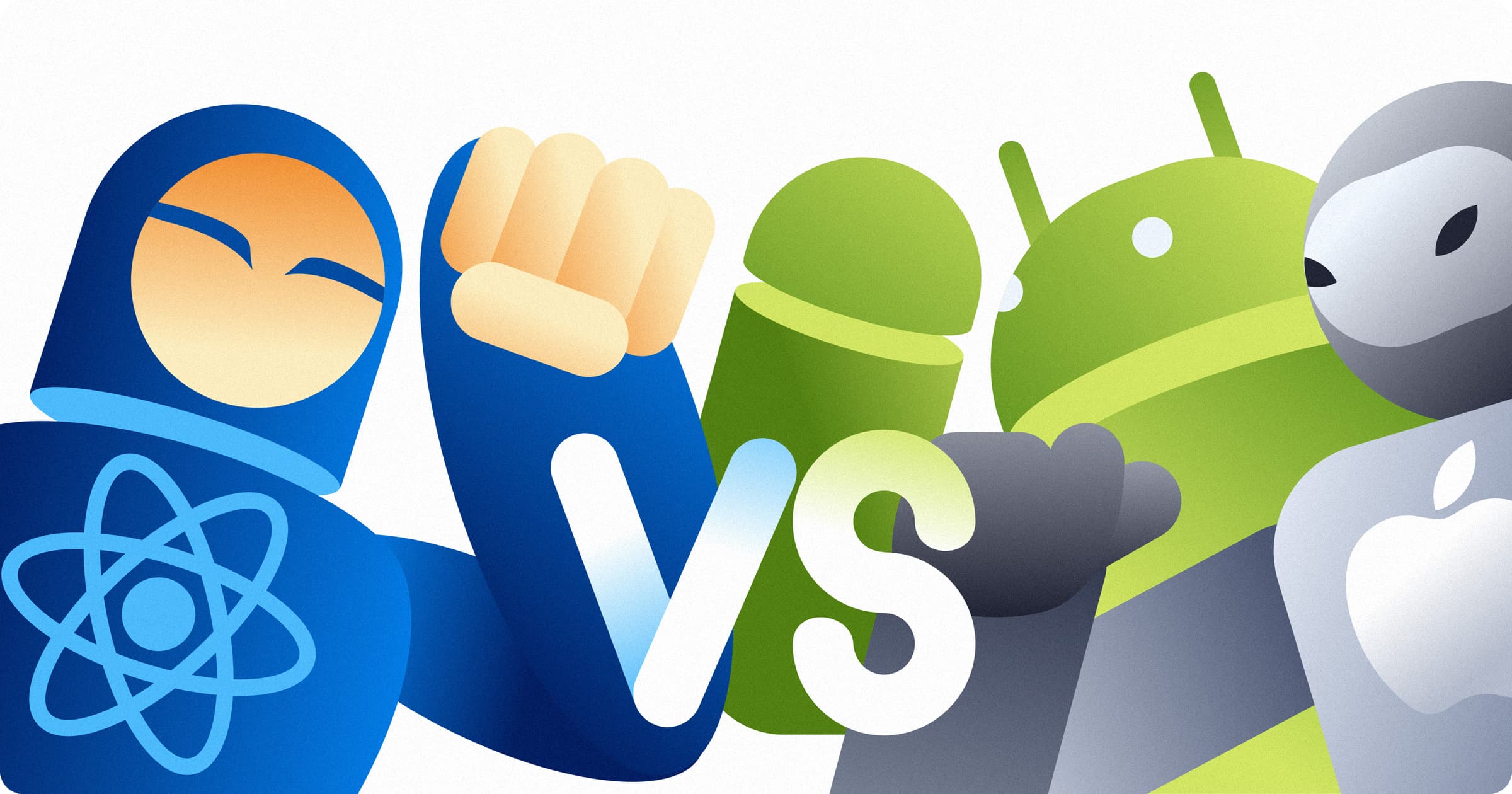
Introduction
Mobile app development has seen significant advancements, with various frameworks and methodologies emerging to meet diverse project requirements. Two popular approaches in this field are React Native and Native development. Each method has its own strengths and weaknesses, which are essential to understand before starting a mobile app project.
What is Native Development?
Native development involves creating mobile applications specifically for a particular operating system, such as Android or iOS. For Android, developers use Java or Kotlin, while for iOS, they use Swift or Objective-C. This approach ensures that the app is optimized for its respective platform, providing superior performance and a seamless user experience. Native apps can fully utilize device-specific features like sensors, cameras, and GPS, which is particularly beneficial for complex functionalities and high-performance applications.
What is React Native?
React Native, developed by Facebook, is a cross-platform framework. It allows developers to build mobile applications for both Android and iOS using a single codebase written in JavaScript and JSX. This 'write once, run anywhere' philosophy makes React Native appealing for its cost-effectiveness and faster development time. However, it also has limitations, such as not providing complete access to native device features or functionalities.
Development Time
Native Development
- Requires writing separate codebases for each platform.
- Time-consuming and labor-intensive.
- For both Android and iOS, two different teams are needed.
React Native
- Allows developers to write a single codebase for both platforms.
- Significantly reduces development time.
- Hot reloading feature makes deployment easier without rebuilding every time.
Mobile App Cost
Native Development
- Typically requires more resources and time.
- Leads to higher costs due to separate codebases.
React Native
- Can reduce the cost by 30%-35% compared to native app development.
- Cost-effectiveness due to code reuse across platforms.
UI/UX Experience
Native Development
- Custom views, navigation patterns, seamless transitions, and animations are more easily achieved.
- Offers a higher mobile app UI/UX experience due to direct interaction with the operating system.
- Ensures the app adheres to specific UI/UX guidelines of each platform.
React Native
- Allows developers to reuse functionality code and write platform-specific code separately.
- Creating a complex user interface can be challenging.
Scalability
React Native
- Provides more flexibility in adding new features and functionalities without rewriting the entire codebase.
- Suitable for processing a higher amount of work in an application and launching higher-functionality updates.
Native Development
- Can be optimized for specific hardware features, enhancing performance and functionality.
- Leverages device-specific hardware like cameras, GPS, and sensors more effectively.
Performance
Native Development
- Generally considered to have superior performance.
- Built using programming languages like Swift, Java, or Kotlin, designed to interact directly with the operating system and hardware components.
React Native
- Works with JavaScript, which runs on a single dedicated device thread.
- Limited ability to perform multiple asynchronous tasks simultaneously, leading to potential performance issues.
- Does not support many trending modules and functionalities, making it incompatible with cutting-edge technologies and complex manipulations.
Programming Language
Native Development
- Uses strict-typed and Object-Oriented Programming (OOP) languages like Kotlin, Java, and Swift.
- Well-documented with a set of rules and regulations, making them easier to learn and master over time.
React Native
- Uses JavaScript, which is easier to learn but has various flaws and loopholes.
- Poor documentation and lack of strict typing can lead to errors and inconsistencies in the code, particularly for complex applications.
Long-Term App Scope
Native Development
- Supported by Google and Apple, ensuring tools and updates are launched in sync with the latest operating system versions.
- Easily gets the tools to implement any functionality, resolve errors, and launch updates without affecting app usability.
React Native
- Does not prioritize updates as much.
- Tools and updates are not launched in sync with Apple and Google, making it critical to build and launch future updates.
- Less surety about how long the support continues, which puts a question mark on whether one should choose React Native for a long-term app process or not.
Practical Insights
Cross-Platform Compatibility
- If your project requires building apps for both Android and iOS with minimal effort, React Native is a good choice.
- Allows writing a single codebase that can be used across multiple platforms.
Performance-Critical Applications
- If your app requires high-speed performance, intensive API calls, or complex functionalities, native development is preferable.
- Native apps can fully utilize device-specific features like sensors and cameras, providing an enhanced user experience.
Cost-Effectiveness
- If budget is a significant concern, React Native can be more cost-effective.
- Reduces development time and effort by reusing code across platforms, translating into lower costs.
Community Support
- React Native has a large community support base that can expedite problem-solving during app development.
- This community support is particularly beneficial for cross-platform development where issues can arise due to platform-specific differences.
Making the Right Choice
Choosing between React Native and native development is crucial for any mobile app project. Each approach has its own set of advantages and disadvantages, which must be carefully weighed based on the specific needs of your project.
React Native offers benefits like cost-effectiveness, cross-platform compatibility, and faster development time. However, it also has drawbacks such as potential performance issues and limitations in accessing native features of the device. Native development, on the other hand, shines with high-performance mobile apps that can fully utilize device-specific features. Yet, it may demand more resources due to separate coding requirements for different platforms.
Ultimately, making the right choice depends on your needs and constraints. By understanding each approach deeply, you can guide your decision-making process effectively and ensure that your mobile app meets the desired standards of performance, user experience, and scalability.
